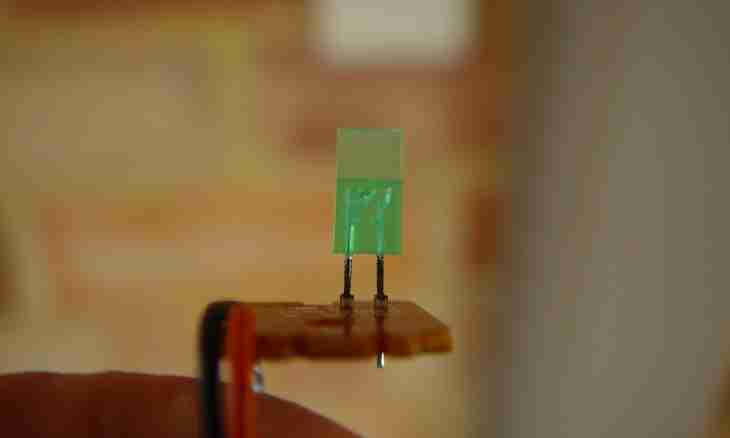Thanks to compactness, high luminosity, technological execution and low energy consumption, light-emitting diodes are used everywhere as light-emitting elements today. One of features of semiconductor devices of this type is very narrow range of supply voltages. As a rule, all performance data of radio components are provided by the producer in the supporting documentation. But what if it is absent? How to learn light-emitting diode tension independently?
It is required to you
- - adjustable power supply of a direct current;
- - variable and constant resistors;
- - 3-4 galvanic cells of 1.5V;
- - voltmeter.
Instruction
1. Learn the direct tension of a light-emitting diode by means of the adjustable power supply of a direct current. Control of level of output voltage of the power supply has to be carried out smoothly in the range of 0-5 volts. It is desirable that the scale of the regulator was precisely an otgraduirovana, or at the device there was an indicator of output voltage. Switch off the power supply. Turn tension regulator to the position corresponding to zero level. Connect a light-emitting diode to the power supply. Turn on the device. Smoothly increase the level of output voltage of the power supply. After a while the light-emitting diode will begin to shine. Bring luminescence level to optimum. Estimate the level of the current tension on a scale of the regulator or consider it as indications of the indicator. If the light-emitting diode did not begin to shine at the voltage level of 1.5-2 volts, switch off the power supply, change polarity of connection of a light-emitting diode, turn tension regulator to zero position and again carry out the test.
2. Learn the direct tension of a light-emitting diode by means of its measurement by the voltmeter. Collect tension divider consisting of the variable and constant resistor. Connect a light-emitting diode parallel to the variable resistor (actually, the variable resistor will shunt a light-emitting diode). Resistance of the constant resistor should be chosen from the range of 1.5-2.1 kOhm, resistance of variable - at 10-20 times more. Reduce resistance of the variable resistor to zero. Connect a DC power source of 4.5-6 volts to the created electrical circuit. It can be received, having connected consistently 3-4 standard galvanic cells (batteries) with a rated voltage of 1.5 volts. Smoothly increase resistance of the variable resistor before obtaining optimum intensity of a luminescence of a light-emitting diode. After that measure tension at it by means of the voltmeter. If the diode does not light up, switch-off the power supply, change polarity of its connection, reduce resistance of the variable resistor to zero and start the test over again.
3. Learn light-emitting diode tension from the reference book. If its series is precisely known to you, obtain necessary data from the suitable reference book of light-emitting semiconductor devices. Similar literature, as a rule, can be found in library.

